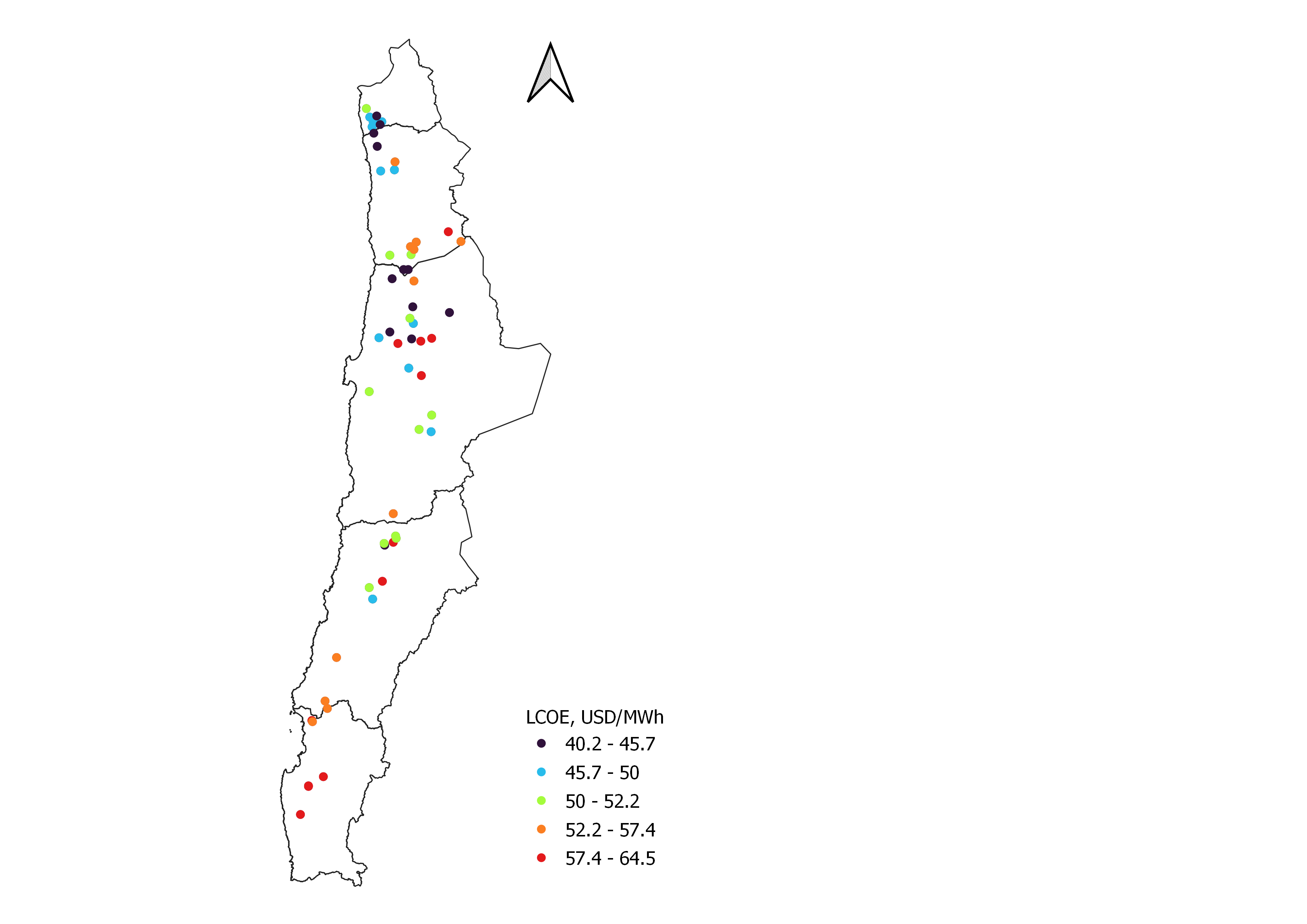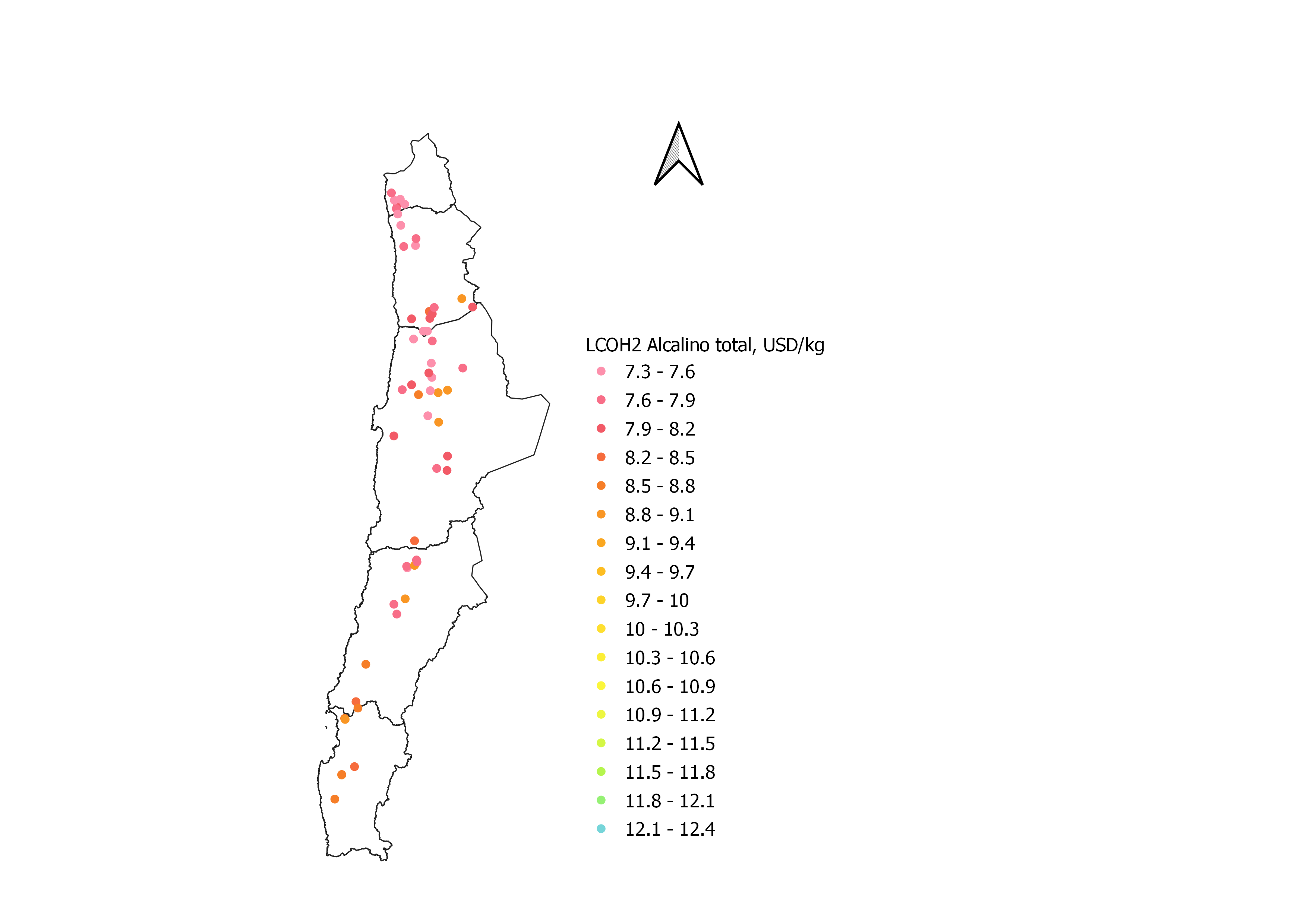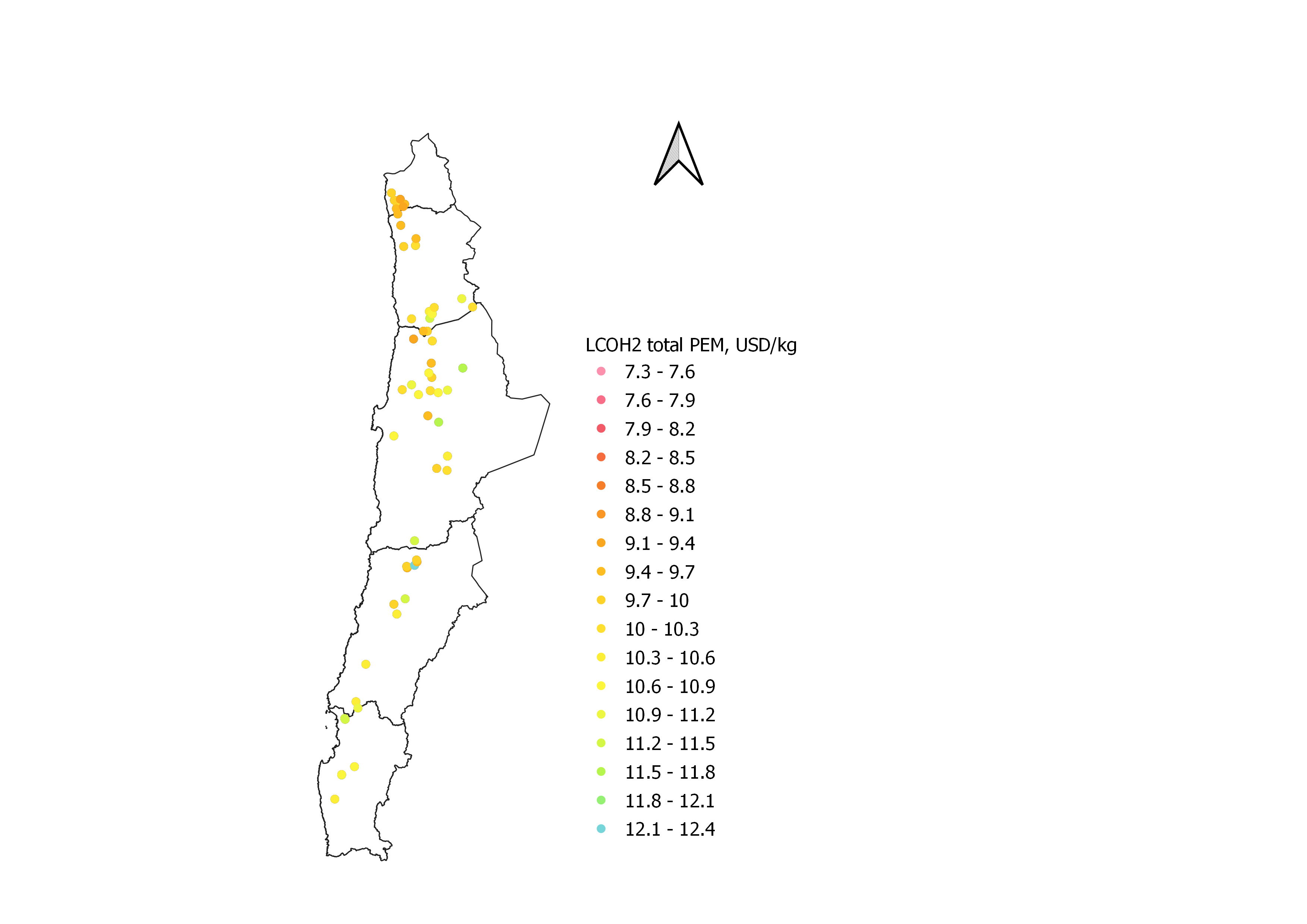Fraunhofer Chile's Green Hydrogen Explorer shows first results



- Mix of Concentrating Solar Power (CSP) and Photovoltaics would be an ideal complement to produce hydrogen in areas with low cloud cover and high solar irradiation, while alkaline electrolyzers show lower specific costs for H2V.
Green hydrogen is considered one of the energy vectors of the future, and Chile can become a leader in its production given its great renewable energy potential. Under this premise, a team of researchers from Fraunhofer Chile's Centre for Solar Energy Technologies developed the Green Hydrogen Explorer (EHV), which allows a preliminary evaluation of green hydrogen production, storage, and transport projects, and whose first results show promising prospects for the installation of new projects in the north of the country.
The executive director of Fraunhofer Chile, Dr. Frank Dinter, said that this tool, developed with support from CORFO's Crea y Valida I+D+i Reactívate business fund, allows the user to narrow down and identify the aspects that generate risk and uncertainty associated with the evaluation of H2V projects. "It is a reliable tool that generates pre-feasibility level results on the potential of the area based on advanced engineering models, which can be presented to investors or Project Management to support decision making. Given the possibility of carrying out customized simulations, it adapts quickly and easily to the dynamics of a changing and constantly evolving market," said Dinter.
Researcher Catalina Hernández, leader of the EHV team, noted that "firstly, it is observed that there are areas with greater potential for hydrogen production, mainly influenced by their corresponding levels of global or direct solar irradiation (depending on the technology), mainly between the regions of Arica and Parinacota and Antofagasta".
According to Hernández, "knowing the volume of hydrogen produced throughout the year and the stability of supply are key points to consider. Potential consumers of green hydrogen, as well as mining companies, cannot work with a fluctuating supply of hydrogen. They also require significant volumes of this energy carrier to, for example, mobilize trucks, machinery and participate in mining processes in a zero-emission mode, without disrupting the normal course of their operations".
Ideal Scenario: Mix of CSP and Photovoltaics
"The key drivers of the levelized cost of hydrogen are the cost of electricity, the capital expenditure (CAPEX) associated with electrolyzers and the degree of electrolyzer utilization. While cheap electricity is one of the main drivers, variable renewables without storage can only achieve a small operating capacity of electrolyzers. That is, fewer operating hours, which increases the share of CAPEX in the levelized cost of hydrogen (LCOH2)," says researcher Francisco Fuentes, who pointed out that, in this sense, "photovoltaics and concentrated solar power represent an ideal complement for hydrogen production in places that combine high solar irradiation and low cloud cover, as is the case in certain locations in northern Chile, as can be seen in the maps on our platform".
Lower cost with alkaline electrolysis
Catalina Hernández also noted that the study data confirms that alkaline electrolysis currently offers lower specific costs than systems based on PEM electrolyzers, given that the former technology has a higher degree of technological maturity, higher levels of efficiency and lower capital costs compared to PEM electrolyzers.
"It should be noted that the costs shown in the potential map consider the costs of hydrogen production, storage and transportation in a current scenario. However, it is expected that the speed of the learning curve, coupled with economies of scale, will allow for performance increases and significant reductions in CAPEX in the coming years. This would imply very different future scenarios for decision making to develop renewable energy projects with high potential associated with solar green hydrogen. For the latter, the EHV offers the option to customize simulations and perform technical-economic feasibility assessments under different scenarios and operating conditions," concluded Hernández.
 Fraunhofer Chile Research
Fraunhofer Chile Research